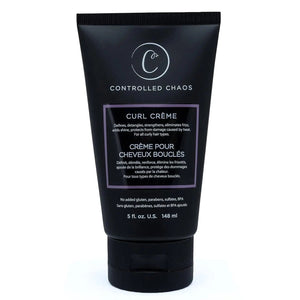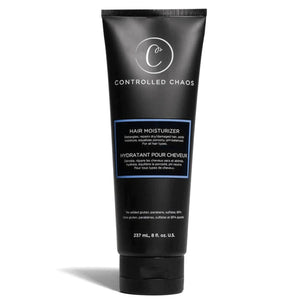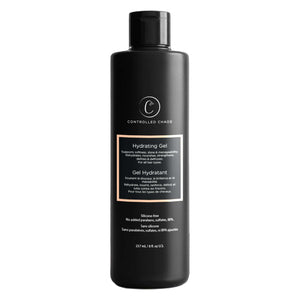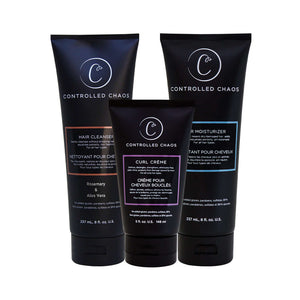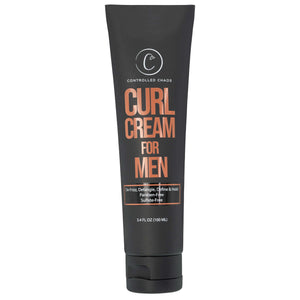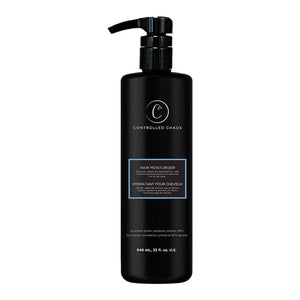

Curly hair never goes out of style. Whether you’re aiming for soft waves, tight spirals, or bouncy ringlets, creating curly hair is all about using the proper methods and maintaining healthy strands. Whether your hair is naturally straight, wavy, or somewhere in between, there are multiple techniques to help you achieve your desired curly look. In this blog, we’ll explore practical ways to make your hair curly, essential tips for lasting results, and the types of products that can help.
Understanding Your Hair Type
Before diving into the curling process, it’s essential to understand your natural hair type. Hair texture ranges from straight (Type 1), wavy (Type 2), curly (Type 3), to coily (Type 4). Knowing your type helps determine the best curling methods and products. For instance, straight hair may require more heat or setting products, while wavy hair might need enhancement and definition.
Tips and Tricks to Make Hair Curly
1. Use Heat Styling Tools (Safely)
Curling irons, wands, and flat irons are quick and practical tools to create curls. Choose a barrel size depending on the curl type you want—thinner barrels for tight curls, wider barrels for loose waves.
Tips:
-
Always use a heat protectant spray.
-
Work in small sections.
-
Avoid high heat settings to minimize damage.
2. Try Heatless Curling Methods
If you want to avoid heat damage, there are plenty of no-heat options that can still deliver beautiful curls.
Options include:
-
Flexi rods or perm rods
-
Braiding or twisting damp hair overnight
-
Using foam rollers or sock curls
-
Scrunching with a styling mousse or gel
3. Use Curl-Enhancing Products
Apply curl-activating creams, mousses, or gels to damp hair to help define curls and reduce frizz. These products usually provide hold and shape while keeping hair soft and manageable.
4. Plop and Scrunch for Definition
After washing your hair, use the “plopping” method with a cotton T-shirt or microfiber towel to define curls. Then, scrunch the hair upward to encourage curl formation as it dries.
5. Diffuse Instead of Air-Drying
Using a diffuser attachment on your blow dryer can enhance curl definition and reduce frizz. Tilt your head upside down and dry with the diffuser on a low-heat setting for bouncy results.
Long-Lasting Curl Maintenance Tips
- Hydration is Key
Curly hair tends to be drier, so be sure to use moisturizing shampoos and conditioners regularly. Deep conditioning once a week can also help.
- Avoid Touching the Hair Too Much
Once your curls are set, avoid running your fingers through them too often, as it can cause frizz and flatten the curls.
- Use Satin or Silk at Night
Sleep with a satin bonnet or pillowcase to reduce friction and preserve curl structure overnight.
Recommended Product Types for Making Hair Curly
You don’t need a specific brand—what matters is the product’s function. Here are the types of products that help most in creating and maintaining curls:
1. Curl-Enhancing Shampoo and Conditioner
Look for sulfate-free, hydrating formulas that won’t strip moisture and can gently support your natural wave or curl.
2. Leave-In Conditioner
Helps soften hair and prepare it for styling, especially when using heat or curl-defining techniques.
3. Curl Creams
These define and hold curls without making them stiff. Great for natural curls and heatless styles.
4. Mousse
Perfect for adding volume and encouraging curl structure, especially in fine or wavy hair.
5. Gel or Curl Custard
Provides a stronger hold and helps keep curls in place throughout the day, while reducing frizz.
6. Heat Protectant Spray
Essential before using any heat tool. It forms a barrier to prevent hair from getting fried or brittle.
Common Curling Mistakes to Avoid
Even with the best tools and products, simple mistakes can prevent your curls from turning out their best. Here are some pitfalls to watch out for:
1. Curling Hair That’s Too Wet or Too Dry
Your hair should be either damp (for heatless methods) or fully dry (for hot tools). Curling wet hair with heat can cause damage, while styling dry hair without any prep may lead to flat curls.
2. Using Too Much Product
While products help define and hold curls, overapplying them can weigh the hair down or make it crunchy. Begin with a small amount and gradually increase as needed.
3. Not Letting Curls Cool
When using heat tools, allow each curl to cool completely before brushing or separating. This helps the curl “set” and last longer.
4. Skipping Detangling
Always detangle hair before curling—preferably while it’s wet and conditioned—to avoid knots and uneven curl patterns.
Natural Ingredients That Help with Curl Formation
Nature has its curl-enhancing tools. Here are a few ingredients to look for in your haircare routine that can support healthy, defined curls:
-
Aloe Vera – Moisturizes and defines curls without weighing them down.
-
Shea Butter – Adds softness and seals moisture, especially beneficial for thicker hair.
-
Coconut Oil – Strengthens and reduces protein loss, though it should be used sparingly for fine hair.
-
Flaxseed – Found in many natural gels, it helps with curl definition and shine.
-
Honey – A humectant that attracts moisture, excellent for dry or coarse hair types.
Curling Tips Based on Hair Length
Short Hair
-
Use a small barrel curling iron or rollers for tighter, more defined curls.
-
Scrunching with mousse works great for natural waves or short curls.
-
Finger coils on damp hair can add definition and volume.
Medium-Length Hair
-
Perfect for beachy waves or bouncy ringlets.
-
Try braiding damp hair in sections overnight for a heatless method.
-
Use a diffuser for volume and curl control.
Long Hair
-
Use larger rollers or a wide-barrel curling wand for soft curls.
-
Consider sectioning into layers to ensure even curl formation.
-
Heavier creams or gels may be necessary to maintain curls for a more extended period.
How Often Should You Curl Your Hair?
This depends on your chosen method and the health of your hair. Heat styling should be limited to one to two times per week to prevent damage. Heatless methods, on the other hand, can be used more frequently. In either case, nourishing your hair regularly is essential to maintain elasticity and prevent breakage.
How to Make Curls Last Longer
You’ve put in the effort to curl your hair, so naturally, you want the results to last. Here are some tried-and-true ways to extend the life of your curls:
1. Start with a Clean Base
Product buildup and oils can weigh your hair down, preventing curls from holding. Wash your hair with a lightweight, curl-friendly shampoo and conditioner before styling.
2. Use a Setting Product
After curling, a light mist of hairspray or a setting foam can help lock the curl in place. Be cautious about using heavy or sticky products, as they can cause curls to clump or fall flat.
3. Clip the Curls as They Cool
After using a curling iron, pin each curl to your head using a hair clip or bobby pin until it cools. This helps the curl set in place, creating a longer-lasting shape and bounce.
4. Avoid Heavy Brushing
Brushing out your curls can cause frizz and ruin the shape. Instead, gently separate them with your fingers or a wide-toothed comb once they are scorched.
5. Refresh with Water or Leave-In
The next day, you can revive curls by misting them with water and scrunching, or by applying a small amount of leave-in conditioner or curl refresher spray.
Styling Ideas for Curly Hair
Once you’ve achieved your desired curls, there are endless ways to show them off. Here are a few styles to try:
- Half-Up Curly Bun
Gather the top half of your curls into a loose bun or ponytail, letting the bottom half cascade freely.
- Curly Ponytail
Pull all your curls into a high or low ponytail. Let tendrils fall around your face for a soft, romantic look.
- Braided Crown with Curls
Braid the front sections of your hair and pin them back like a headband. Leave the rest of the curls loose.
- Messy Curly Updo
Great for formal occasions or everyday wear. Loosely pin sections of curls into a bun or twist for a voluminous look.
When to See a Professional
While you can curl your hair at home, sometimes it helps to get advice from a stylist, especially if:
-
Your curls never hold, no matter what you try
-
You’re transitioning to wearing your natural curl pattern.
-
You need a curl-specific haircut (like layers or a “curly cut”)
-
You're experiencing damage from heat styling or chemicals.
A stylist can recommend techniques and products tailored to your unique hair type and goals.
The Curl Journey: Patience Pays Off
Achieving and maintaining curls isn’t just about styling—it’s a journey of trial and discovery. It may take some experimentation to find the proper curl method, the perfect combination of products, and a consistent routine that suits your lifestyle.
The good news? Once you understand your hair and what it responds to, curling becomes easier and more rewarding. You'll not only learn how to create beautiful curls but also how to care for them and wear them with confidence.
Final Takeaway
From heat styling to heatless techniques, curl creams to twist-outs, there’s a method for everyone when it comes to achieving curly hair. Focus on hair health, moisture, and gentle styling practices to support long-lasting curls. With consistency and care, you can turn any hair type into a curly masterpiece—naturally or with a bit of help.
So go ahead—try a new curling method tonight and wake up to the beauty of bouncy, defined curls!
FAQS
How can I make my hair curly?
You can create curly hair using heat tools like curling irons or wands, or opt for heatless methods such as braiding damp hair, using rollers, or twist-outs. The method you choose depends on your hair type, texture, and whether you prefer temporary or long-lasting curls.
What products do I need to create curly hair?
To make your hair curly, you'll need curl-enhancing products like a moisturizing shampoo and conditioner, a leave-in conditioner, a curl cream or mousse for definition, and a light gel or spray for hold. A heat protectant is essential if you're using hot tools.

